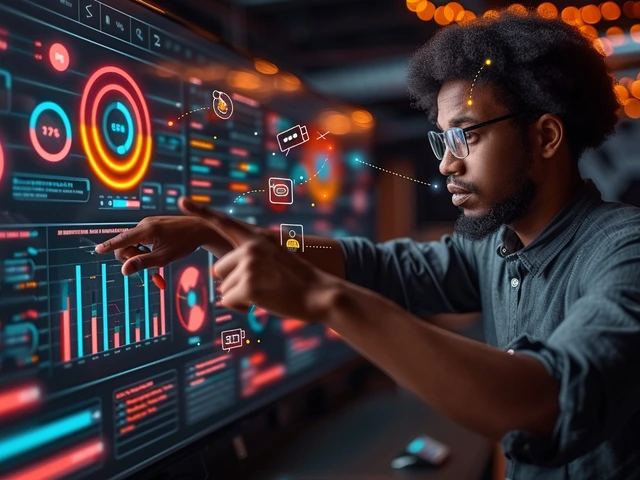Cracking the Code: Understanding ChatGPT
The intriguing world of artificial intelligence entered a new era with the introduction of OpenAI's GPT models. In that league, one of my personal favourites is ChatGPT. Astonishing, perplexing, and often lavishing me with uncannily human-like responses, it remained a topic of my conversations with Edwin quite a few times. Long discussions at our Brisbane homeland often centred around the thought – what is the true capacity of this impressive technology? Delving into the vast expansive sea of global knowledge, I decided to put up my thoughts on the potential future of this technology. Let's begin by understanding it better.
The Born, Evolution, and Structure of ChatGPT
Emerging from the family of OpenAI’s potent GPT models, ChatGPT's main purpose is to improve the human interaction experience by offering fluent text generation. This text generation model gleans from approximately a trillion words of internet text, and it's pretty fascinating how it does that. Funnily enough, watching it work feels like one of those sci-fi movies where robots take over the world. But, in reality, it's less threatening and more exciting!
Here's how it works: based on a machine learning technique known as Transformer, it uses the input provided (in terms of conversational history), predicts the next word in the flow, and keeps doing that till it hits the end of a conversation or if it reaches the specified limit. And voila! You have a full-fledged conversation.
Anthropomorphising Our Digital Companions
Isn’t it exciting that we have a digital companion that can talk our tongue, understand our context, sprinkle a bit of humour when required, and essentially make us feel less lonely in this digital world? I mean, who wouldn't love a smart assistant that gets your jokes and responds in kind? To be honest, it's super fun (and a little creepy) to see those words roll off its digital tongue.
But wait, it's not human! Edwin often jokes that one day I might invite ChatGPT over for dinner. Well, I admit, I like the idea, but it's not physically possible (yet!). Remember, ChatGPT is simply a text-generation model with impressive interactive capabilities. It certainly raises questions about our relationship with these not-so-human companions, humanising them perhaps a little too much.
The Curious Case of Propaganda
An interesting facet of ChatGPT’s capacity is that it refrains from explicitly engaging with certain content – and for good reason. However, as we reconsider the future of propaganda study in this digital age, ChatGPT seems to be a fascinating entity.Expectations from this advanced AI systems are high - to use or abuse them for propagandistic purposes. Isn’t that interesting and a little scary too?
In the wrong hands, this technology could potentially power disinformation campaigns, producing text so convincing and human-like, distinguishing the fake from reality might become a challenge. Talk about a sequel to the movie 'Inception'!
A Contemplative Future: Where Do We Draw the Line?
A crucial part of studying the future of propaganda in context with ChatGPT is understanding its ethical and safety protocols.OpenAI has put in the work to include mechanisms that mitigate harmful uses or malpractices. However, a burning question is, as we rely more on AI, where do we draw the line?
The line between an aid and a crutch, between a tool and a weapon, or maybe between reality and illusion can blur quickly. From an optimistic perspective (yes, your lady is quite positive!), it all comes down to how we harness this potential
OpenAI’s Reformed Path: The ChatGPT Policy
OpenAI’s approach to moderation of AI and its products in the form of a system behaviour and deployment policy deserves applause. Aiming at a neutral standpoint and avoiding taking a political stance, OpenAI implements a thoughtful method to limit the misuse of ChatGPT.
Being true to its principles, ChatGPT doesn't facilitate any form of stimuli that promotes negative or harmful behaviour. The aim is to ensure the technology powers a positive future and doesn’t become a tool for propaganda.
Turing Our Eyes towards an Exciting Future
What does tomorrow hold for artificial intelligence, particularly for something as potent as ChatGPT? Much like the legendary Alan Turing, who decoded the enigma, today we stand before a similar enigma - the excitement and mystery of AI's potential.
While Edwin believes that we might soon be served breakfast by AI-powered robots (I am not complaining if it means less work!), I see a broader spectrum where AIs like ChatGPT can help bridge language gaps, provide 24/7 customer support, deliver personalised learning, and so much more. In essence, the possibilities are expansive, as long as we maintain the ethical integrity of using AI!
Personal Rendezvous: The Joy of Conversing with ChatGPT
To round off, let me share a personal anecdote. I've found myself sharing a laugh with ChatGPT when I stumbled upon it while researching an article. To my surprise, it shared a joke on linguistics (a topic I was writing about). Its capacity to grasp context, generate human-like language, and engage audiences mesmerized me.
And thus began our journey, Edwin, ChatGPT, and I. I can't help but acknowledge the comedic brilliance Edwin brings into our discussions. How humans and AI will form relationships in the future is uncertain, but at present, I'd say it's more good than bad!
So, there you have it, my lovely readers. ChatGPT, artificial intelligence and the future – it's all a massive, exciting enigma. We stand on the precipice of an AI-infused era, overlooking a horizon filled with opportunities and challenges. As always, it’s in our hands how we choose to explore this new dawn!





